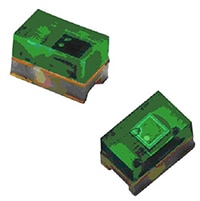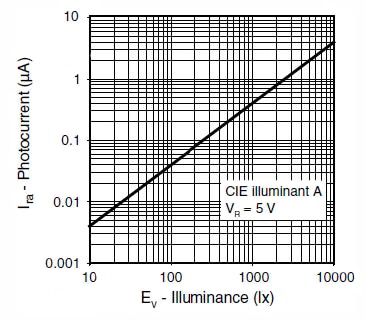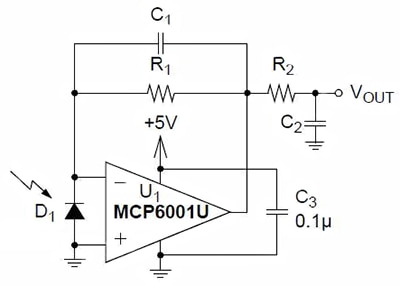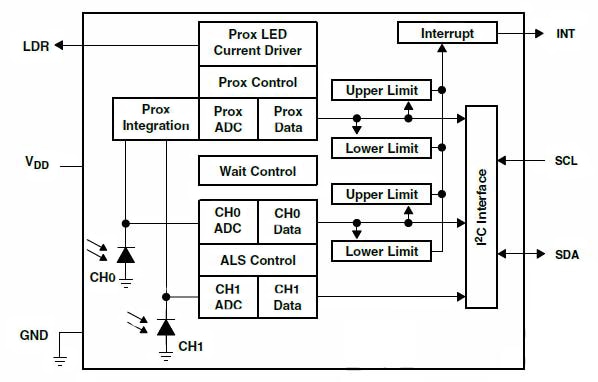A Counter-Intuitive Design Solution: Adding More Circuitry (Ambient Light Sensors) to Save Power
投稿人:电子产品
2016-04-07
It seems contradictory at first. If you want to save power and energy, add more devices that draw and consume power and energy. However, there are cases where this is your best design strategy. Adding technology can reduce, in real time and cumulatively, the amount of energy consumed on an ongoing basis without sacrificing performance or functionality.
One good example we’ll look at is adding ambient-light sensors to reduce backlight power consumption in subdued lighting conditions. This is not a new concept and different types of more-is-less designs have been implemented, tested, and proven worthy. However, what has changed is the technology available for ultra-small and miniaturized detection of light level while drawing next to no current.
This article examines ambient-light-sensing technologies and design solutions that can be used to increase battery life and runtimes for modern handheld devices that use backlighting. All parts, data sheets, reference designs, and development systems referenced here can be found on the Digi-Key website.
Traditional approachesCadmium sulfide photo detectors have historically been used to detect light levels but are not the ideal solution for compact and handheld devices. Their first drawback is slow response times. While rise and fall times can transit in about 1/10 of a second, full-level saturation and discharge can take 5 to 10 seconds.
Another drawback is their large size. The cells require a span of detector material and larger through-hole packages take up too much PCB surface area to make these viable for fast-reacting, energy savings technologies.
For optical and ambient-light applications, photodiodes and phototransistors are the simplest and smallest form of transducers that are light sensitive. The key parameters to consider will be constraint driven. Handheld applications usually favor the absolute smallest size. Key is the spectral response of the selected part. While most photodiodes and phototransistors are in the IR range, many support the visible light range and also provide small packaging.
Take, for example, the Vishay TEMD6200FX01 PIN Photodiode, which comes in an 0805 surface-mount package (Figure 1). Its high photosensitivity is adapted to match the human eye response so its ±60 degree sensitivity should pick up a wide cone of ambient-light level to sample. It also predominantly passes the visible-light ranges although it also has sensitivity in the 850-1100 nm IR band as well. This can be filtered for ambient-light applications, or remain sensitive, allowing the same sensor to provide an IR input source for night low-light conditions.

Figure 1: Packaged in an 0805 surface-mount size, this photodiode is sensitive to the visible light range in an exponentially linear fashion to match the response of a human eye.
With photodiodes, absorption of incoming photons creates electron-hole pairs, also known as carriers which propel charge-creating current. Another characteristic of photodiodes is that reverse-biased PN junction currents provide the most linear response to exponential light intensity, which is why the Vishay part so well matches the human eye – which also responds exponentially to light-level intensities (Figure 2).

Figure 2: The linear reverse-bias photo-current response provides a simple solution to incorporate light-level data into backlight-control algorithms.
With a reliable characteristic response curve, simple A/D converters on virtually any microcontroller can obtain accurate values without a lot of processing or look-up tables. The simplest solution is a fixed, reverse-bias voltage generator created by a series resistor (Figure 3A). A value read into the micro can be used directly to compare to known ballpark thresholds. This stepped response is low resolution, but may be all that is needed to switch backlight levels using a simple stepped algorithm.
A slightly larger solution is to use a differential input on a micro’s A/D stage and bias the photodiode between two resistors (Figure 3B). This not only provides a completely linear response, it is also relatively immune to common mode noise.

Figure 3: Single-ended ground referenced (A, left) or differential biasing (B, right) can allow simple photodiodes to connect directly to most embedded systems A/D converter stages.
A trans-impedance op-amp approach
Precision solutions that can maximize the dynamic range and resolution of the A/D converter will need active solutions that can attenuate, offset, and amplify signals to provide the maximum rail-to-rail levels for a host micro. Trans-impedance op-amps make ideal solutions for interfacing to high-impedance sensors and photodiodes are no exception. Here, we are effectively creating a precision current sensor.
Design stages for PIN photodiodes requires DC stability compensation, closed-loop gain selection, and noise control. Placing the photodiode across the op-amp inputs creates a ground-referenced photovoltaic solution to minimize DC errors (Figure 4).

Figure 4: A trans-impedance op-amp approach will increase the PCB surface area needed, but allows for compensation, DC offsets and noise reduction and will help reduce gain peaking to provide more uniform response.
In the example shown in Figure 4, D1 can be the Vishay surface-mount part, or leaded parts like the OSRAM SFH 203 P, which can be bent and directed to provide side or angular coverage. The op-amp selected is the rail-to-rail Microchip MCP6001U in a SOT-23-5 package which features a low-current supply of 100 μA, low offsets of 4.5 mV, and low-power supply operations down to 1.8 V.
A similar part, the Microchip MCP6031T-E/OT is more limited with a 10 KHz gain bandwidth range. This may not be important, as the light levels will not be changing typically at the 1 MHz rate that the MCP6001 supports. Another benefit of the MCP6031 is that it can be used on the readily available Microchip MCP6031DM-PTPLS photodiode PICtail Plus demo and development board. This illustrates the bias and DC stabilization and implements a low-pass filter for noise reduction. Microchip also provides a user’s guide on techniques for amplifying high-impedance sensors using photodiodes as examples1.
Self-contained systemsThe addition of bias control, self-timing, temperature compensation, and digital interfacing allows monolithic systems-on-a-chip to perform at higher level functionality while keeping space tight. Take for instance the Lite-On LTR-329ALS-01 optical-sensor subsystem chip.
This ultra-small (2 mm x 2 mm) chip LED package houses both IR and visible-light diodes and produces a normalized spectral response output that is temperature compensated from -30 to +70°C. It also matches the human-eye response and can use one of six selectable gain settings for a wide dynamic range from 0.01 lux to 64K lux. A simple 2-wire I2C interface allows the host micro to set up and initialize all internal registers as well as read light level with an effective 16-bit resolution.
Another example of a highly integrated solution comes from AMS-TAOS with its TSL27721FN Light-to-Digital converter chip. Also in a 2 mm x 2 mm package, this part features an interrupt to wake up a low-power sleeping processor only when needed. A proximity-detector LED current driver is also included to detect the presence of a reflected signal the sensor can detect. Limit levels can be set and programmed via a 2-wire I2C port (Figure 5).

Figure 5: A single 2 mm x 2 mm chip can not only transmit calibrated ambient-light levels, it can double as a proximity detector with an interrupting wakeup. Note the upper and lower limit setting on both channels.
In summaryExtending battery runtime for handheld devices will continue to be a major issue in the foreseeable future. Engineers wielding the sharpest pencils – those who can preserve energy without sacrificing performance – will produce winning designs. Ambient-light detection is one of those unusual technologies where adding circuitry can make a difference. As we have shown, there is a good range of solutions available and some are bound to fit your budget and other design constraints.
For more information about the parts discussed in this article, use the links provided to access product pages on the Digi-Key website.
References
免责声明:各个作者和/或论坛参与者在本网站发表的观点、看法和意见不代表 DigiKey 的观点、看法和意见,也不代表 DigiKey 官方政策。









 中国
中国